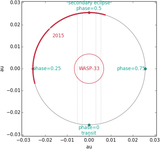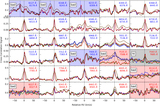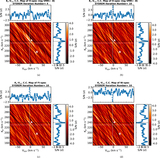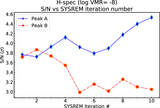Image Details
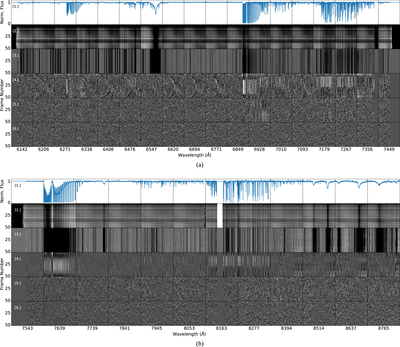
Caption: Figure 3.
Reduction process for each order of both blue (a) and red CCDs (b). The first row [1] shows an example of the normalized 1D spectrum of WASP-33 following the correction of the blaze function variation and the common wavelength grid iteration. The next row [2] shows the 2D spectrum with the wavelength as the horizontal axis, each label representing the median wavelength of the order, while the vertical axis is the frame number. The third row [3] shows the final reduced spectra after the correction of the blaze function in the common wavelength grid. The variation of brightness along the frames for all orders is due to the blaze function variation. The fourth row [4] shows the mean subtracted spectra as the input to SYSREM. The fifth [5] and sixth [6] rows show the residual spectra after running SYSREM with one and four iterations and through the double high-pass filter; at the latter stage almost all telluric lines have been removed. The masked bad regions are shown by gray areas in all rows except the first one.
Copyright and Terms & Conditions
© 2017. The American Astronomical Society. All rights reserved.


